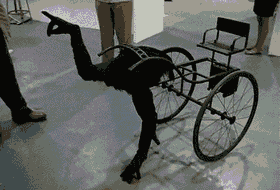Wiring Pinouts
 |
| Someone's wiring mess. |
It
looks as though very one of the Arduino Uno’s pins are going to be used. There
are 6 analog and 13 digital I/O. I added a 4x20 liquid crystal display (I2C LCD
eBay $11.95) and a game controller four button left-right-up-down rocker switch
to the project. It turns out that this LCD must use analog channels A4 and
A5.
At the moment the Arduino pinout looks like this:
Digital
Pins 0 I/O USB TDX
1 I/O USB RDX
2 Out Caliper valve R
3 Out Caliper valve L
4 Out Ultrasonic sensor Trigger
5 Out Servo PWM R
6 Out Servo PWM L
7 In Break switch
8 In Wheel speed sensor
9 In Ultrasonic sensor Echo
10 In Up
momentary switch
11
In Down
momentary switch
12
In Slower momentary switch
13
In Faster momentary switch
Analog
Pins A0 In Pressure sense R
A1
In Pressure
sense L
A2
In Rotation
sensor R
A3
In Rotation
sensor L
A4 I/O I2C
display SDA
A5
I/O I2C
display SCL
I am using a 13 wire cable with quick connectors that came out of a retired car’s CD
changer, to carry the connections between the legs and the Arduino in the
cart. The cable pinout looks like this:
0. Shield Ground
1. Orange 5
volt for sensors
2. Pink (big) Not used
3. Black (big) Ground
4. Yellow Rotation
sensor right
5. Red in Brown
shield Pressure sensor right
6. Dark blue Servo PWM right
7. Brown & Grey
shielding Ground
8. Purple Rotation
sensor left
9. White in Grey
shield Pressure sensor left
10. Grey Servo PWM left
11. Brown Not used
12. Powder blue Not
used
13.
Green Not used
An
additional four conductor cable was needed to power the caliper valves and to
supply power to the servos. The servo power lines caused sensor noise when they
were inside the 13 wire cable. All is well now.
Black – Ground Red – 6 volts for servos
Yellow - 24 volts
Left caliper White – 24 volts Right caliper
 |
| Project Electrical Layout. |









































